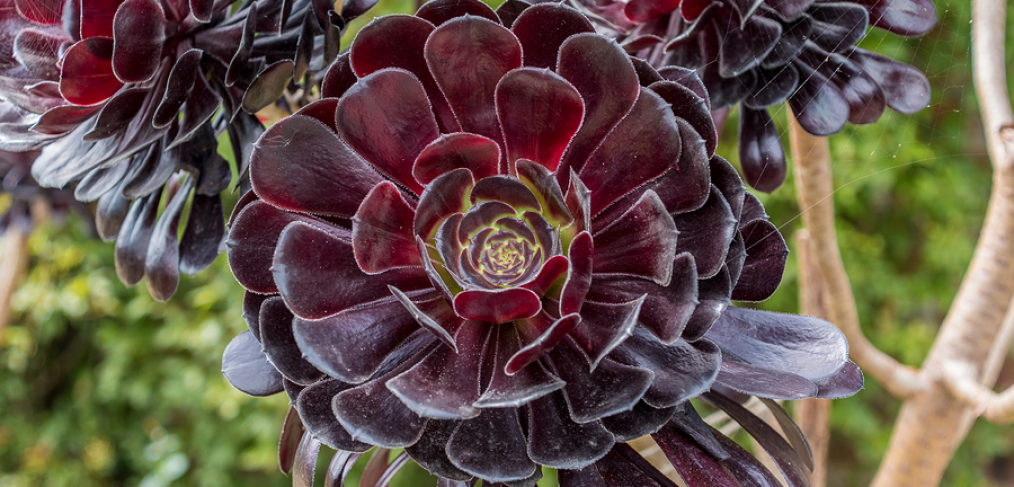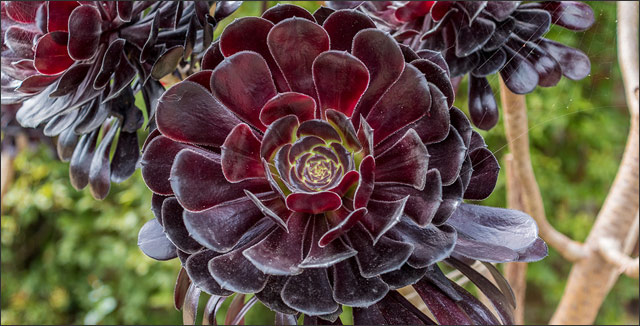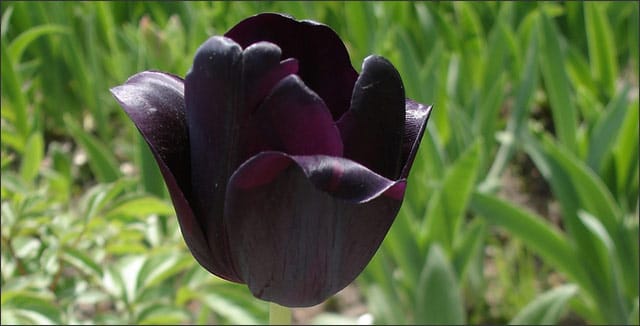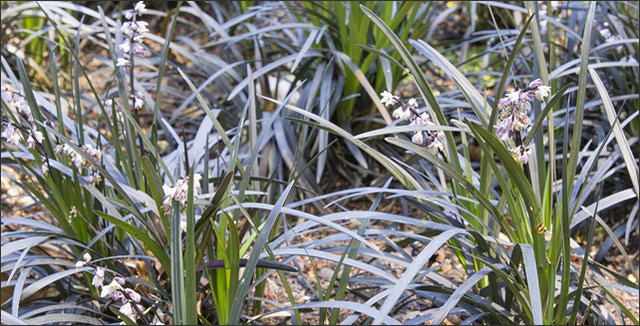
10 Black Flowers and Plants to Add Mystery and Dimension to Your Garden

Aeonium Arboreum (Zwartkop)
One of the most interesting new trends in gardening this year is the addition of black flowers and plants many people are making to their gardens.
Whether you love the Gothic allure of black, deep red and deep purple flowers and foliage, or you love the contrast and dimension black adds to anything visual, these are just a few of the many black plants in the world. They are as diverse and lovely as the colorful plants in the same family. Who knows? This could be the best way to liven up your garden!
Black Flowers and Plants
Black Velvet Petunia
In 2017, Ball flower breeder, Jianping Ren, unveiled the world’s first-ever black Petunia at a UK trade show. It has created huge media and public excitement around the world. This is mostly because, unlike most “black” plants which are actually dark purple or red, this petunia has been created from nothing in a sense.
It took Ren four years. “The black colour did not exist in Petunias before, so it has to come from the right recombination of a novel colour mutant and multiple regular colour genetic backgrounds. It is difficult and very different from breeding true blue flowers because at least there are some blue flowers you can start with,” she says. “It’s unique and unusual, and opens the door for more new colors.”
The black velvet does best as an annual, ready to be transplanted outdoors in spring from seedlings after the danger of the first frost has passed. The silky black blooms are most decadent through the first part of May in a stable environment with consistent sun and temperatures.

Black Tulip ‘Queen of Night’
Tulip ‘Queen of Night’
This deep-maroon tulip is an heirloom variety circa 1940. If you’ve been in the gardening world for any length of time, you’ve probably seen these bobbing their dark heads along with white tulips in spring to create a dynamic partnership. They are just as hardy as any other tulip variety and bloom for a solid three weeks in early spring under the right conditions.
Black Star Calla Lily
These streamlined cones, popular in bridal bouquets, also come in a deep purple which looks nearly black. They are great for gardens as well! In addition, they repel deer and attract butterflies too. They grow to be 16-18’’ tall and bloom in mid summer if planted in late spring. Plant the black star calla lily in sun or part shade in good fertile soil with good drainage for optimum results.
Black Blood Dahlia
There is no true “black” dahlia. While dahlias are some of the easiest flowers to grow and cross-breed with other flowers, creating dozens of wildly different varieties, the only “black dahlia” refers to a Hollywood starlet who was murdered in the 1940s. This weed, native to Mexico and bred by Dutch growers, does come in a dark red that approaches black in some cases. Even if you can’t get true black, dahlias are well-worth growing for the ease and beauty they afford.
Black Hyacinth
The first black hyacinth was unveiled in 2005. This flower is not truly black – more like dark, dark blue. It’s called “Midnight Mystic” and it’s still in very limited supply. The good news is that they are as easy to grow as any other spring bulb.

Black mondo grass
Black Mondo Grass
Black mondo grass, Ophiopogon planiscapus ‘Nigrescens,’ does not actually belong to the grass family at all. Technically, it’s a flowering ground cover. It may produce small pinkish flowers and black berries.
In the south, this grass is often called “monkey grass” as its leaf fronds make small bushes of wild and spiky-looking grass stems. Black mondo grass actually stays quite short and works beautifully as a border, can tolerate full sun in northern climates and shade in southern climates.
Hollyhock Nigra
This variety of Hollyhock has been around since at least 1629. It was planted in the gardens of Monticello by Thomas Jefferson. Additionally, it has been used by gardeners for dye and to beautify gardens for centuries. The near-black blooms are actually deep red but have such a luster, you will want to keep planting the many seeds this plant reproduces year after year.
Black Hellebore
Helleborus Niger is more commonly called Christmas rose or black hellebore. It’s an evergreen perennial flowering plant in the buttercup family that flowers in the depths of winter, hence the name “Christmas rose.” It does not actually belong to the rose family. These gorgeous, large black open flowers with a gold center can be difficult to grow well, as they prefer dappled shade and moist alkaline rich soil. However, if conditions are not perfect, you can try adding organic compost and lime to acidic soils.
Aeonium Zwartkop
Another plant called a “black rose’ is actually a winter-blooming succulent. It has rosettes of burgundy-black leaves that top a stalk-like stem that can resemble flowers or be grown alongside flowers to show them off. Native to the Canary Islands, this plant does great along the ocean. It is also deer resistant. The aeonium zwartkop needs full sun and well-drained soil.
Black Velvet Elephant Ear
These stunning plants are best cultivated indoors in cooler climates. It’s a tropical plant adapted to the warm, moist region of southern Asia. Elephant ear is evergreen in tropical climates.
The “black velvet” variety is a dwarf Alocasia reginula. It has rounded heart-shaped leaves with silver and purple veins underneath and can put forth Anthurium-like flowers under favorable conditions.
In addition, elephant ears need a lot of humidity, partial to full shade and very fertile soil. It’s very cold sensitive, so make sure you protect it from drafts! Outdoors, should you live in a tropical region, it makes stunning ground cover.
Takeaway
Black plants and flowers may be all the rage right now, but they aren’t going away any time soon. Whether you fancy a new cultivar or hybrid or an heirloom bloom long prized for its stark lushness, these beautiful plants deserve a spot in any well-thought-out garden.
Over to You
What are your favorite black flowers or plants? Would you consider adding one of these to your garden?



